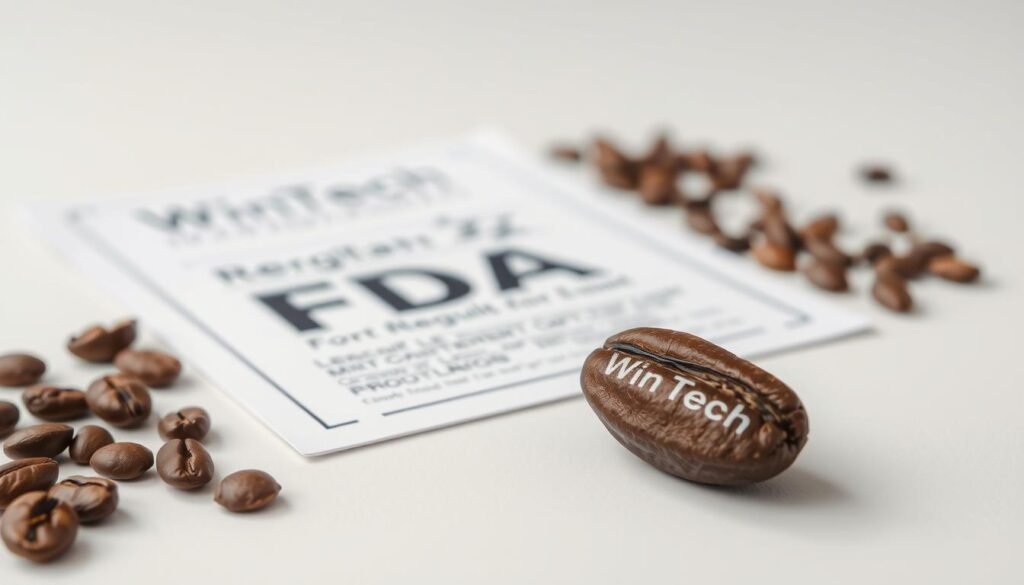Did you know that the Wintech packaging of coffee beans is more than just a protective shell for your morning brew? Behind every bag of coffee lies a complex web of federal regulations designed to ensure your safety and product quality.
Wintech Package, a leader in Packaging of Coffee Beans solutions, understands the critical importance of meeting FDA and USDA standards. The packaging of coffee beans is a precise science that goes far beyond simple preservation. Airtight coffee containers and innovative degassing valve packaging represent the cutting edge of regulatory compliance.
From farm to cup, every step of Packaging of Coffee Beans involves strict guidelines that protect consumers and maintain the highest standards of food safety. These regulations ensure that the coffee you enjoy is not just delicious, but also meets rigorous federal requirements.
Key Takeaways
- FDA and USDA regulations are crucial in coffee bean packaging
- Packaging protects both product quality and consumer safety
- Innovative packaging technologies meet strict compliance standards
- Proper packaging preserves coffee flavor and freshness
- Regulatory compliance is a complex but essential process
Understanding FDA Regulations in the Packaging of Coffee Beans
Navigating the complex world of packaging of coffee beans requires a deep understanding of FDA regulations. These guidelines ensure that specialty coffee bags meet strict safety and quality standards, protecting both consumers and coffee producers.

The FDA plays a critical role in regulating how coffee beans are packaged and labeled. Compliance is not just a legal requirement but a commitment to maintaining whole bean freshness and consumer safety.
Importance of Compliance
Compliance with FDA regulations is crucial for coffee manufacturers. These guidelines help ensure:
- Product safety and quality
- Accurate ingredient information
- Protection of consumer health
- Maintaining product integrity
Labeling Requirements
Specialty coffee bags must include specific information to meet FDA standards. Key labeling requirements include:
- Product name and type
- Net weight
- Manufacturer information
- Ingredient list
- Nutritional facts
Safety Standards
The FDA establishes rigorous safety standards for packaging of coffee beans. These standards address potential contamination risks and ensure that packaging materials do not compromise the coffee’s quality or whole bean freshness.
Proper packaging is not just about protection—it’s about preserving the essence of your coffee from roaster to consumer.
By adhering to these comprehensive regulations, coffee producers can guarantee that their specialty coffee bags meet the highest standards of safety and quality.
USDA Guidelines for Organic Coffee Beans Packaging
Navigating the complex world of organic coffee packaging requires a deep understanding of USDA regulations. Your commitment to quality starts with knowing the intricate guidelines that govern the packaging of coffee beans for organic products.

The USDA sets rigorous standards for organic coffee packaging design that go beyond typical food packaging requirements. These guidelines ensure that your organic coffee maintains its integrity from roasting to consumption.
Certification Process for Organic Packaging
To achieve USDA organic certification, coffee producers must meet strict criteria:
- Obtain certification from an accredited USDA organic certifying agent
- Demonstrate complete traceability of coffee bean origins
- Prove zero use of prohibited substances in production
- Maintain detailed documentation of packaging processes
Packaging Material Standards
Your vacuum sealed coffee packaging plays a crucial role in maintaining organic integrity. The USDA requires specific material standards that protect the coffee’s quality:
- Materials must be food-grade and free from harmful chemicals
- Packaging should prevent contamination
- Recyclable or biodegradable materials are preferred
- Complete transparency in packaging composition
Wintech Package leads the industry by developing innovative packaging solutions that exceed USDA organic packaging requirements. Their commitment ensures that your organic coffee remains pure, fresh, and compliant with the highest national standards.
Selecting the right packaging is not just about protection—it’s about preserving the organic essence of your coffee from farm to cup.
Best Practices in the Packaging of Coffee Beans
The packaging of coffee beans has evolved dramatically in recent years, with innovative solutions transforming how consumers experience their favorite brew. Cutting-edge techniques now focus on preserving coffee’s delicate flavors while meeting growing environmental expectations in the US market.
One-way valve bags have become a game-changer in coffee preservation techniques. These specialized packages allow carbon dioxide to escape while preventing oxygen from entering, which helps maintain the coffee’s freshness and prevents potential packaging damage. Your choice of packaging can significantly impact the overall quality and taste of the coffee you enjoy.
Sustainable Packaging Solutions
Sustainable coffee packaging has emerged as a critical trend for environmentally conscious consumers. Brands are now investing in recyclable materials, biodegradable pouches, and packaging solutions that reduce overall carbon footprint. You’ll find more companies using compostable bags and renewable resources to meet growing consumer demand for eco-friendly products.
Importance of Quality Control
Quality control remains paramount in the packaging of coffee beans. Rigorous testing ensures that packaging maintains optimal coffee integrity from roasting to brewing. Advanced packaging technologies now protect against moisture, light, and temperature variations, guaranteeing you receive the highest quality coffee possible.
Consumer Preferences in Packaging
Consumer preferences are driving significant changes in coffee packaging design. Smaller, resealable packages and single-serve options are gaining popularity, reflecting the busy lifestyles of modern coffee drinkers. By 2025, expect to see smart packaging technologies that provide freshness tracking and interactive consumer experiences.







